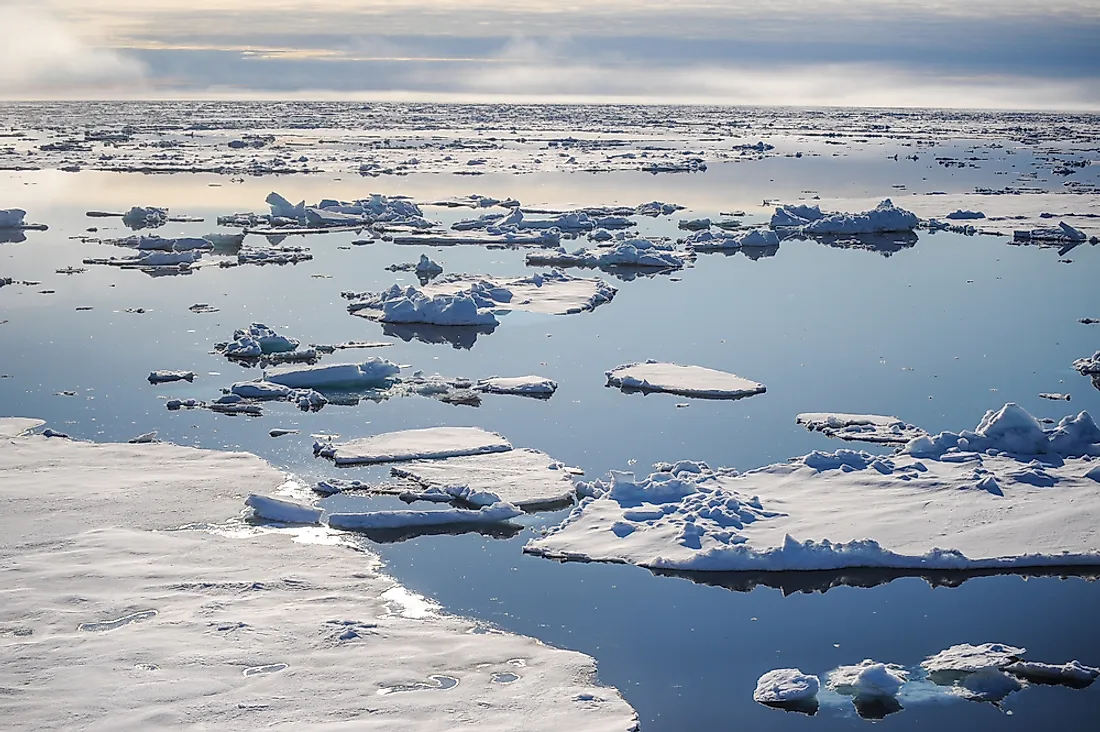Where Is The North Pole?

The North Pole is the point at which the earth’s surface integrates with its axis; it is also the highest northern place. It lies on the Northern Hemisphere and is directly opposite of the South Pole. The North Pole's latitude is 90° north, and it is where all longitudinal lines meet. The North Pole also defines the direction of the true north. The North Pole is situated somewhere in the Arctic Ocean; thus, it is surrounded by a mass of water.
Location of the North Pole
The Arctic Ocean contains nearly permanent sea ice that is continuously drifting. The depth of the water in the Arctic Ocean is about 13,980 feet while the ice is 6-10 feet thick. The continually moving sea ice has made it difficult to create a permanent station for the North Pole.
No country has ownership over the North Pole. It is located in international waters and is governed by the International Seabed Authority. The five surrounding nations of Canada, Russia, Norway, Denmark (through Greenland), and the United States (through Alaska) can only claim 200-nautical-miles off their coast.
Exploration of the North Pole
The exploration of the North Pole began as early as the 16th century when there were beliefs that it was in the sea. The North Pole was even named Open Polar Sea in the 19th century, and there was hope for a path. Various excursions began taking place with the aim of getting to the North Pole.
The first person to explore the path was William Edward Parry who was a British Naval Officer. He managed to reach the 82° 45′ North latitude. Several other people also tried to explore the North Pole, but it was all in vain. However, Umberto Cagni, an Italian Royal Navy managed to get to the 86° 34' latitude on April 25, 1900. Explorers Robert Peary and Frederick Cook also claimed to have explored and reached the North Pole, but due to lack of enough supporting evidence, their stories were dismissed.
The Soviet scientists were the first to build a North Pole ice station in May 1937; however, on February 19, 1938, the station had shifted by 2850 kilometers. More people continued to explore the North Pole including Lieutenant Colonel Joseph O. Fletcher, Ralph Plaisted, and Vasily Elagin. Throughout these excursions, something that has remained constant is the shifting of the North Pole. Due to weather variations, it is shifting eastwards.
Weather at the North Pole
The North Pole, along with the South Pole, experiences the slowest sunrise and sunset on Earth because of the slanted axis of the earth. The sunrise occurs before the equinox of March while sunset occurs after September's equinox. Summer in the North Pole involves sunshine all day, known as a Midnight Sun, while the opposite occurs in winter, known as a Polar Night, during which varying degrees of darkness lasts all day.
The temperatures during winter in the North Pole are about -40℉ and rise to 32℉ during summer. Although these temperatures are still low and do not bring about much warmth, the North Pole is considerably warmer than the South Pole. The North Pole gets its warmth from the water, which is a reservoir of heat.











